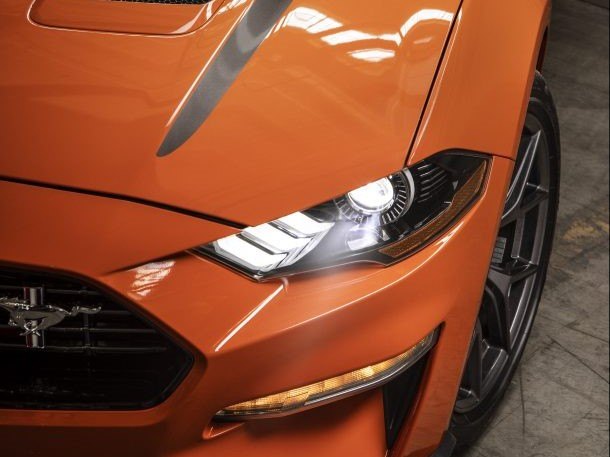Already Crunchy Ford Goes Even More Vegan

Always the innovator in creating car parts out of plants that aren’t trees, Ford Motor Company plans to burnish its green cred with a new building material: a composite created partly from dried coffee bean husks.
Following the automaker’s soybean experiments of the early 1940s, Ford adopted soybean-based foam for its seat cushions back in 2008. Now, coffee chaff will help add strength and lower energy use for the manufacture of headlight housings and other components. Its supplier partner on this project? McDonalds.
“The companies found that chaff can be converted into a durable material to reinforce certain vehicle parts. By heating the chaff to high temperatures under low oxygen, mixing it with plastic and other additives and turning it into pellets, the material can be formed into various shapes,” the automaker said in a statement Wednesday.
The process of roasting coffee separates the skin from the bean, after which it is discarded. Millions of pounds of the stuff then sits around, being of no use to anyone. McDonalds — which brews a far better cup of coffee than Tim Horton’s, by the way, and how about that sausage-and-egg McMuffin? Damn! — now expects to funnel much of its coffee waste to Ford.
“Like McDonald’s, Ford is committed to minimizing waste and we’re always looking for innovative ways to further that goal,” said Ian Olson, Mickey D’s senior director of global sustainability. “By finding a way to use coffee chaff as a resource, we are elevating how companies together can increase participation in the closed-loop economy.”
Already, such headlamp housings are going into the doomed Lincoln Continental, but their use will proliferate throughout the brand. Ford’s other partners on this effort are Varroc Lighting Systems, which supplies the headlamps, and Competitive Green Technologies, which processes the coffee chaff.
[Image: Ford]

More by Steph Willems
Latest Car Reviews
Read moreLatest Product Reviews
Read moreRecent Comments
- Syke F1 fan and normally watch every race, although most of them are DVR'd. I've got my Xfinity box set up to record everything automatically. This past Sunday I watched the race live for a change.
- Jalop1991 There is no inflation. Everything is cheaper than it was 5 years ago. SHRIMP AND GRITS!
- ChristianWimmer Exterior and interior look pretty flawless for such a high mileage car. To me this is an indication that it was well-maintained and driven responsibly. It’s not my cup of tea but it’s bound to find an enthusiastic owner out there.And with ANY car, always budget for maintenance.
- Fred I'm a fan and watch every race. I've missed a few of the live races, but ESPN repeats them during more reasonable hours.
- Mikesixes It has potential benefits, but it has potential risks, too. It has inevitable costs, both in the price of the car and in future maintenance. Cars with ABS and airbags have cost me at least 2000 bucks in repairs, and have never saved me from any accidents. I'd rather these features were optional, and let the insurance companies figure out whether they do any good or not, and adjust their rates accordingly.

































Comments
Join the conversation
The mice will love this with more food like items going into raw materials this is like a smorgasbord of feeding on electric wiring and getting a caffeine fix gnawing on the headlight bezels.
Add soybean based body parts and this will solve much of the problem of recycling vehicles with rats and mice feeding on them.